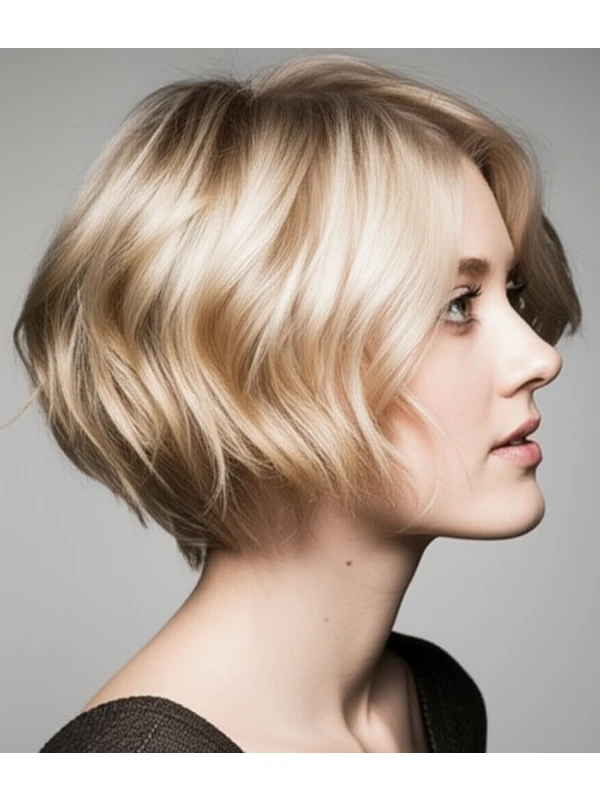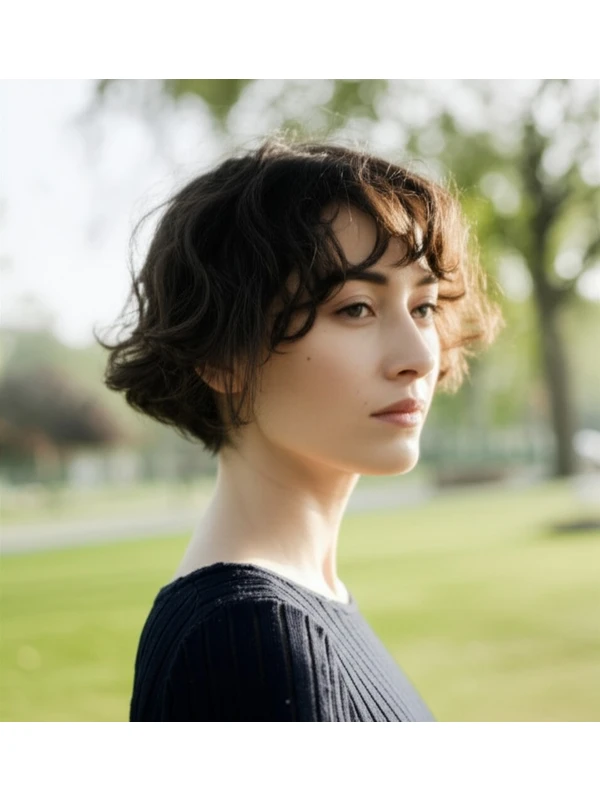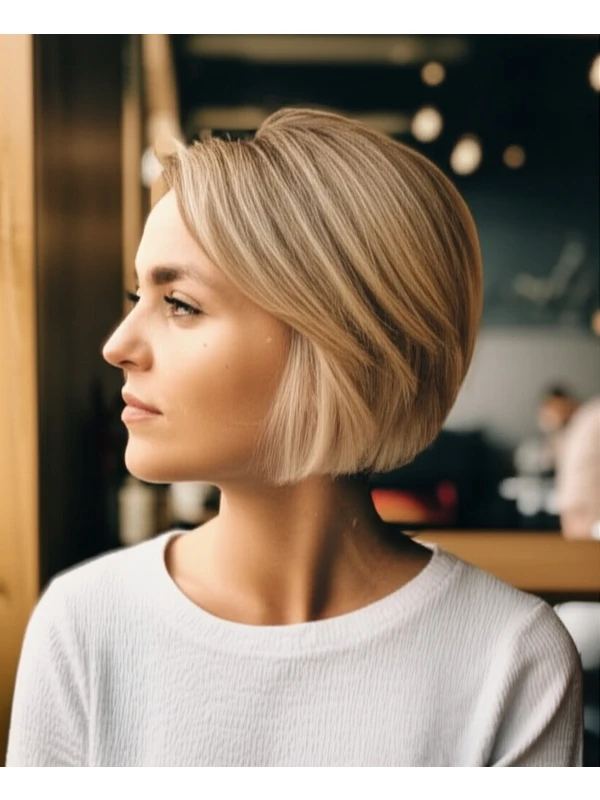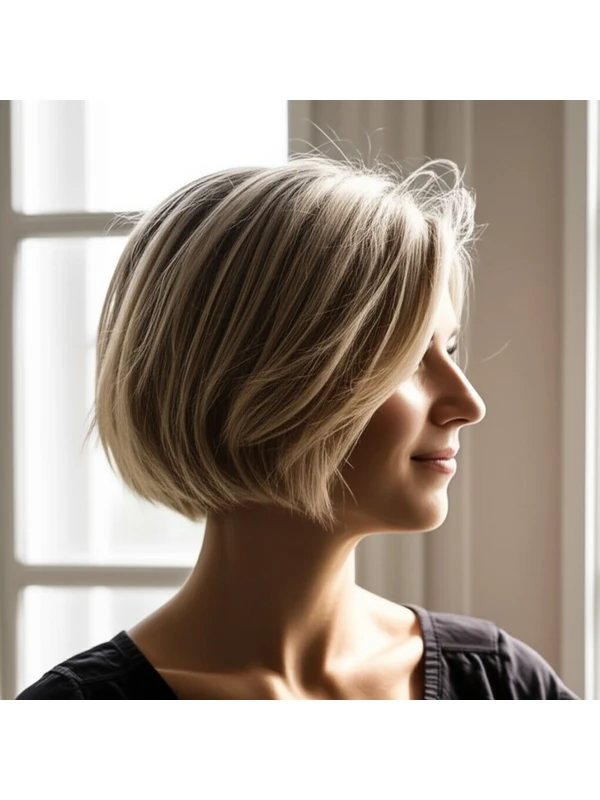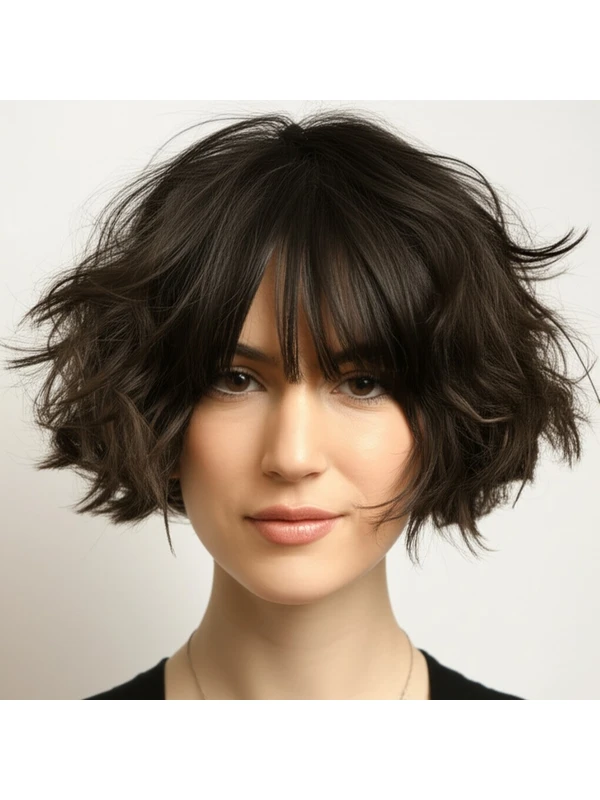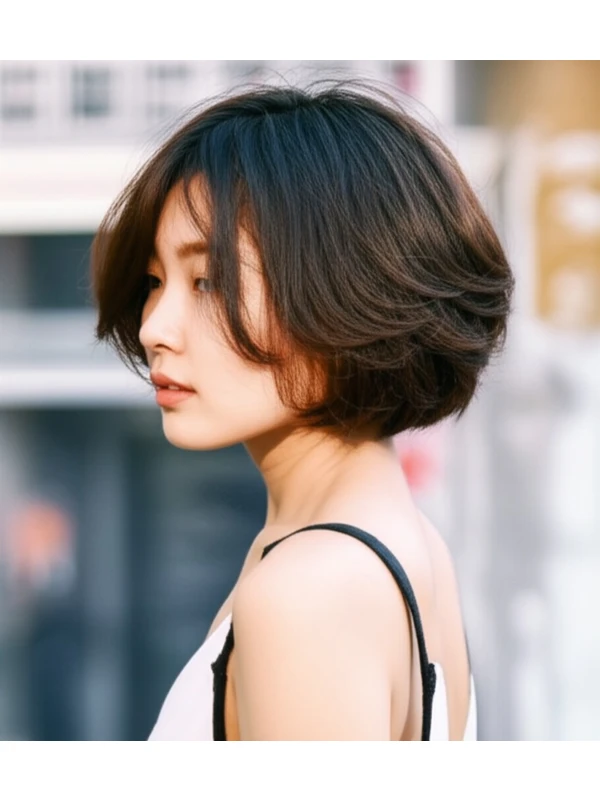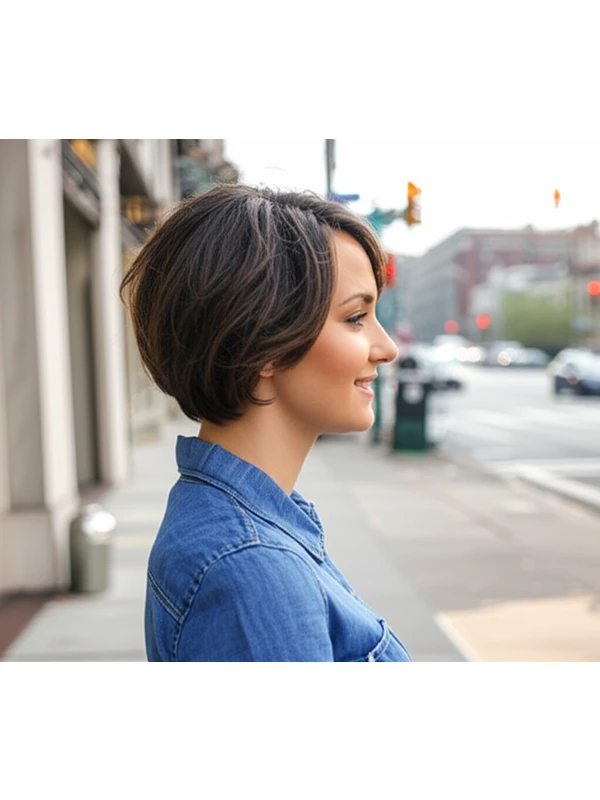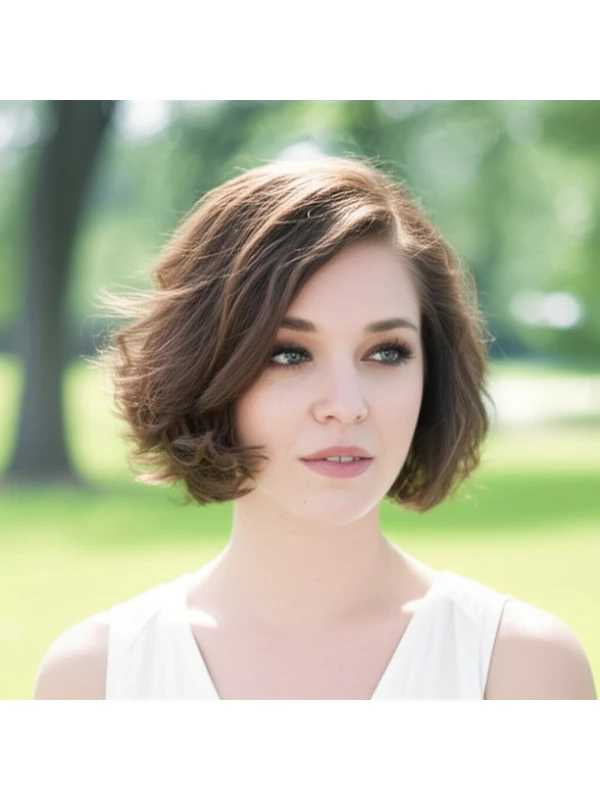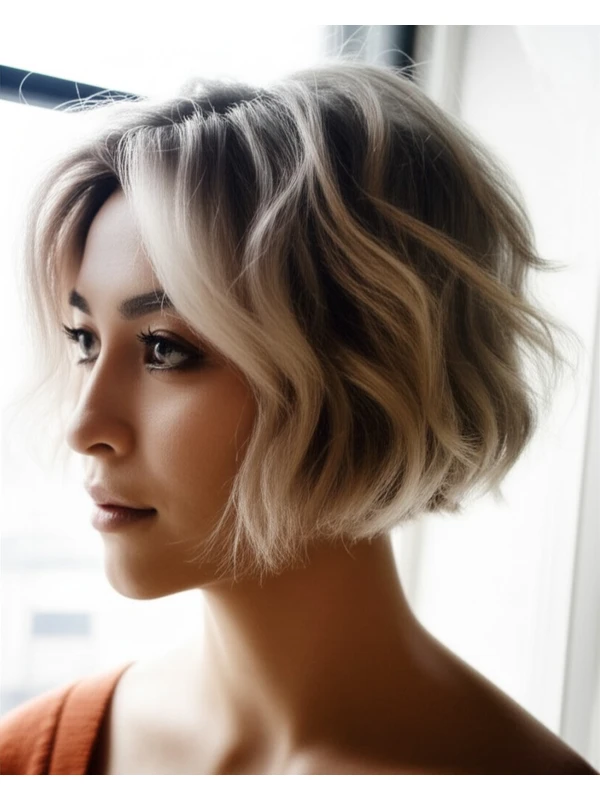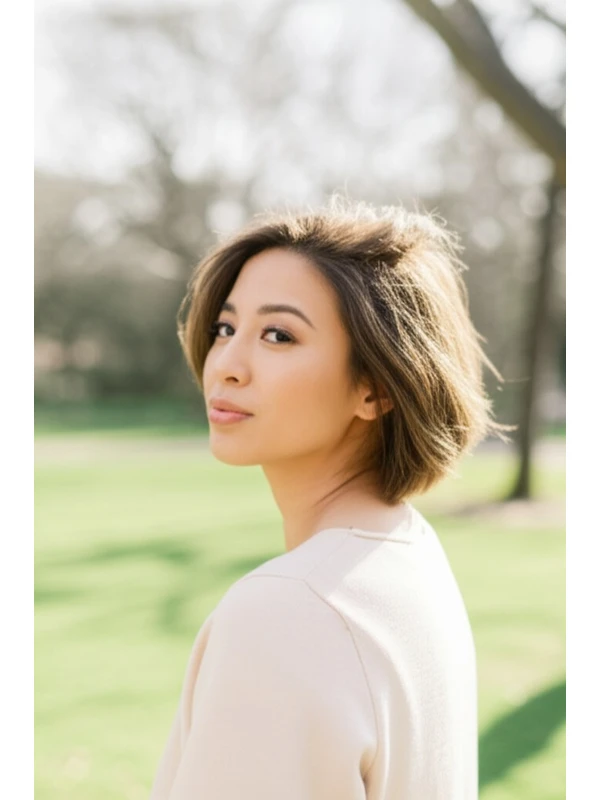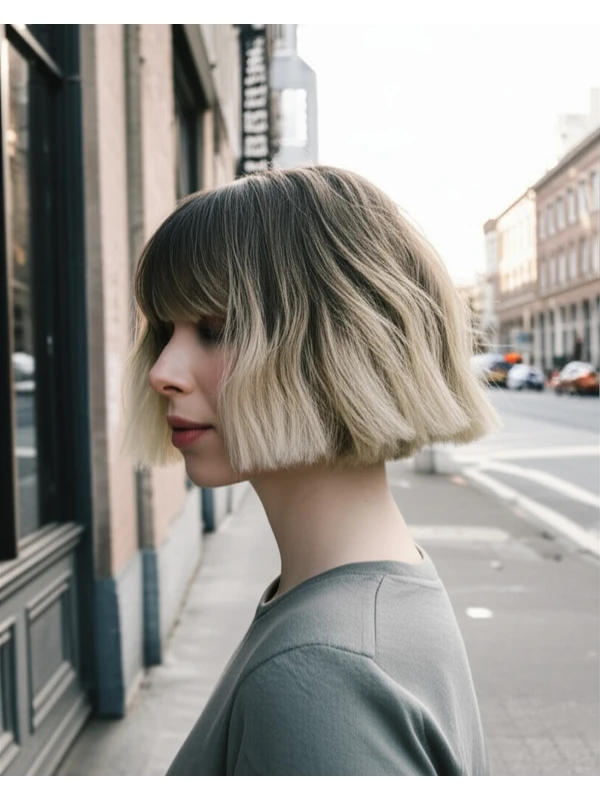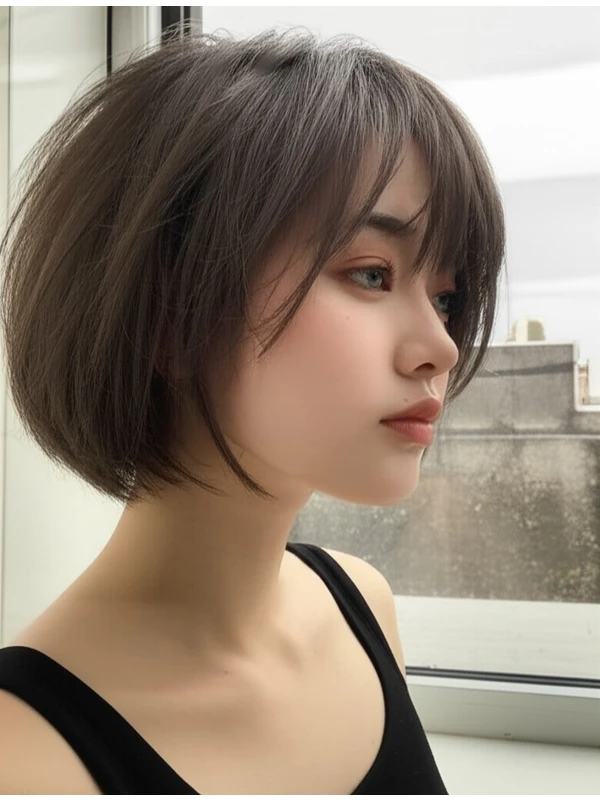#The French Bob: Effortless Chic for Every Face & Hair Type
The French bob is having a major moment – and with good reason! It’s a timeless style that feels both sophisticated and effortlessly cool. But it's more than just a short haircut; it's an attitude. Let's dive into everything you need to know about embracing this iconic look.
#1) Background & Definition: What is a French Bob?
The French bob isn’t simply short – it’s defined by its shape and the way it frames the face. It originates from classic Parisian style, emphasizing natural movement and understated elegance.
- Cut Geometry: Typically blunt-cut with minimal layering (though subtle texture can be added). The back is shorter than the front, creating a slight upward lift at the crown.
- Key Features: A soft, rounded shape that sits close to the head. It’s not overly dramatic or severe – think understated chic.
- Length Ranges: Generally falls between the chin and jawline. Variations can extend slightly past the jaw for a more elongated look (a "long bob" or lob). The most classic French bob usually sits right at the jaw.
- Alternative Names: Jaw-length bob, blunt bob, Parisian bob.
#2) Face Shape Fit: Finding Your Perfect Angle
The beauty of the French bob is its adaptability – but understanding your face shape will help you maximize its impact.
- Oval Faces: Lucky you! The French bob generally flatters oval faces beautifully. Experiment with a side part for added asymmetry and interest. A soft, wispy fringe can also enhance this balanced look.
- Round Faces: A French bob can slim rounder faces by adding vertical lines. Keep the length at or slightly below the jawline to elongate. Avoid blunt bangs which can emphasize width; opt for a softly angled fringe instead. Volume on top helps create height and balance.
- Square Faces: Soften harsh angles with rounded edges. A French bob with subtle layering around the cheekbones will be most flattering. Side-swept bangs or a slightly off-center part soften the jawline.
- Heart Faces: The French bob balances a wider forehead and narrower chin. A full, face-framing fringe can help balance proportions. Avoid styles that are too short in the back as this could accentuate a pointed chin.
- Diamond Faces: A French bob with side-swept bangs will soften angular features. Volume at the crown adds roundness to diamond shapes.
- Oblong (Long) Faces: A French bob can shorten an oblong face. Keep the length at or just below the jawline and add volume through layers, especially around the cheeks. A full fringe helps visually widen the face.
#3) Body Proportions & Height Guidance: Balancing Your Silhouette
The French bob isn't just about your face; it impacts your overall silhouette too!
- Petite: A shorter, more classic French bob (right at the jawline) will prevent you from looking overwhelmed.
- Average Height: Most variations of the French bob work well for average heights. Experiment with different lengths and fringe options to find what suits you best.
- Tall: A slightly longer French bob (just past the jawline) can help visually shorten your height. Adding volume at the crown creates balance.
- Narrow Shoulders: Volume on top is key! This will create a more balanced look and broaden shoulders visually.
- Broad Shoulders: Keep the style relatively close to the head, avoiding excessive volume that could exaggerate shoulder width. A side part can also help soften the overall appearance.
- Short Neck: Avoid bobs cut directly at the jawline as this can make a short neck appear even shorter. Opt for a slightly longer length or add height through styling.
#4) Works Best With Hair Types & Densities: Tailoring to Your Texture
The French bob is surprisingly versatile, but understanding how your hair texture and density will influence the final result is crucial.
- Straight Hair: The classic French bob shines on straight hair! It maintains its shape easily and looks incredibly sleek.
- Wavy Hair: Embrace the natural wave! A French bob with subtle layering can enhance movement and create a soft, undone look. Be mindful of shrinkage (see below).
- Curly/Coily Hair: While possible, this style requires careful consideration. The length needs to be adjusted for shrinkage – what looks like a jawline cut when dry will likely sit much higher when wet. Layers are essential to prevent a triangular shape and promote curl definition. Consult with an experienced stylist who understands curly hair cutting techniques.
- Fine Hair: A blunt French bob can create the illusion of thickness. Avoid too many layers, which can make fine hair look even thinner.
- Medium Hair: The most versatile density! Most variations will work well.
- Thick Hair: Layering is essential to remove weight and prevent a bulky appearance. A slightly longer French bob (just past the jawline) might be more manageable than a very short, blunt cut.
Shrinkage Factor (Curls & Coils): Curly and coily hair can shrink significantly when dry. Account for this by cutting your bob longer than you think you want it initially. A good stylist will factor in shrinkage during the consultation.
#5) Styling Variations: From Sleek to Textured
The French bob is a blank canvas! Here's how to personalize it.
- Sleek vs. Texturized: A sleek, polished look uses smoothing serums and a flat iron. A textured version embraces natural movement with sea salt spray or texturizing cream.
- Middle vs. Side Part: A middle part creates symmetry; a side part adds softness and asymmetry.
- Fringe Variations: Blunt bangs, wispy bangs, side-swept bangs – the possibilities are endless!
- Occasion Styling:
- Casual: Air dry with texturizing cream for an effortless vibe.
- Office: Sleek and polished with a flat iron and shine serum.
- Evening: Add volume at the roots, use hairspray for hold, and consider accessories like barrettes or headbands.
#6) Maintenance: Keeping Your Bob Beautiful
- Trim Cadence: Every 4-6 weeks to maintain shape.
- At-Home Routine: Gentle shampooing (2-3 times per week), hydrating conditioner, leave-in treatment for moisture and protection.
- Heat vs. Air Dry: Minimize heat styling whenever possible. When using heat, always use a protectant spray.
- Product Checklist:
- Sulfate-free shampoo & conditioner
- Leave-in conditioner or detangler (especially important for wavy/curly/coily hair)
- Heat protectant (if using hot tools)
- Styling cream, serum, or wax (depending on desired texture)
- Hairspray (for hold and finishing)
- Estimated Daily Styling Time: 5-15 minutes (can be shorter with air drying).
#7) Grow-Out Roadmap: Evolution Over Time
- Months 1-3: The bob maintains its initial shape. Regular trims are essential to prevent it from looking overgrown.
- Months 3-6: As the hair grows, it can start to look boxy or awkward. Your stylist will adjust the layers and shape to blend the new growth seamlessly. Consider adding a subtle face-framing layer for more movement.
#8) Color Pairings: Enhancing the Cut with Hue
- Cool Undertones (pink, blue): Icy blondes, ash browns, cool reds.
- Warm Undertones (yellow, gold): Honey blondes, caramel highlights, copper reds.
- Low-Commitment Options: Balayage or babylights to add dimension without a harsh root line.
#9) Season & Occasion Guide: Styling for Every Moment
- Spring/Summer: Lighter styling products, embrace natural texture and air drying.
- Fall/Winter: Add warmth with richer color tones, use smoothing serums for added shine.
- Work: Sleek and professional – a polished bob is always appropriate.
- Weddings: Elegant updo variations or soft waves.
- Parties: Playful styling options like adding volume or using statement accessories.
#10) Cost & Time: Salon Investment
- Salon Time: Typically 45-90 minutes for the initial cut, potentially longer with color services.
- Estimated Price Range: Generally falls within a moderate to higher price bracket compared to other cuts – expect roughly $75-$200+ depending on location and stylist experience.
#11) Pros & Cons: Weighing Your Options
Pros:
- Timeless and chic
- Versatile styling options
- Can be flattering for many face shapes
- Relatively low-maintenance (with regular trims)
Cons:
- Requires frequent trims to maintain shape
- May not suit all hair textures without adjustments
- A drastic change from longer styles – requires commitment
#12) Salon Consultation Script: Questions to Ask Your Stylist
Here are some prompts to guide your conversation with your stylist:
- "Based on my face shape, what length and fringe options would you recommend?"
- "How will this cut work with my hair texture and density? What adjustments might be needed?"
- “Can you show me examples of the French bob styled in different ways?”
- "What products do you recommend for styling and maintaining this haircut?"
- "How often should I come back for trims?"
#FAQs: Your Burning Questions Answered
- Is a French bob suitable for fine hair? Yes! A blunt cut can create the illusion of thickness, but layering is important to avoid looking too flat.
- Can I wear a hat with a French bob? Absolutely! The shorter length often works well under hats, though very deep or wide-brimmed styles might feel bulky.
- How do I style my French bob if it's naturally curly? Focus on defining your curls and minimizing bulk. A skilled stylist can cut layers to encourage curl formation.
- What if I want a longer fringe with my French bob? It’s possible, but the length needs to be carefully balanced so it doesn't overwhelm your face.
- Can I do this myself at home? While possible for experienced DIYers, a professional cut ensures precision and optimal results – especially if you have curly or coily hair.
- What if my bob starts looking boxy as it grows out? Communicate with your stylist! They can blend the new growth with layers to maintain shape and movement.

